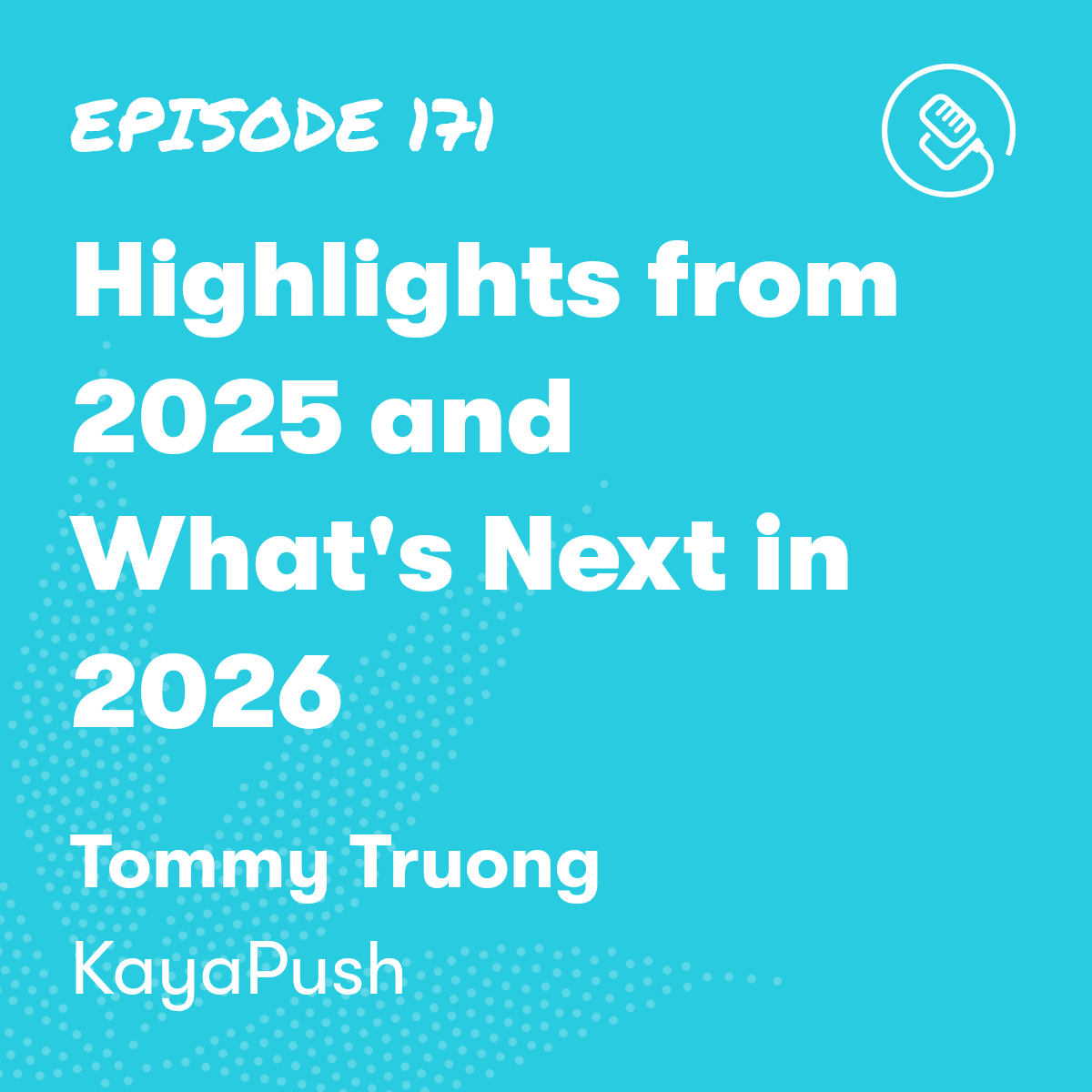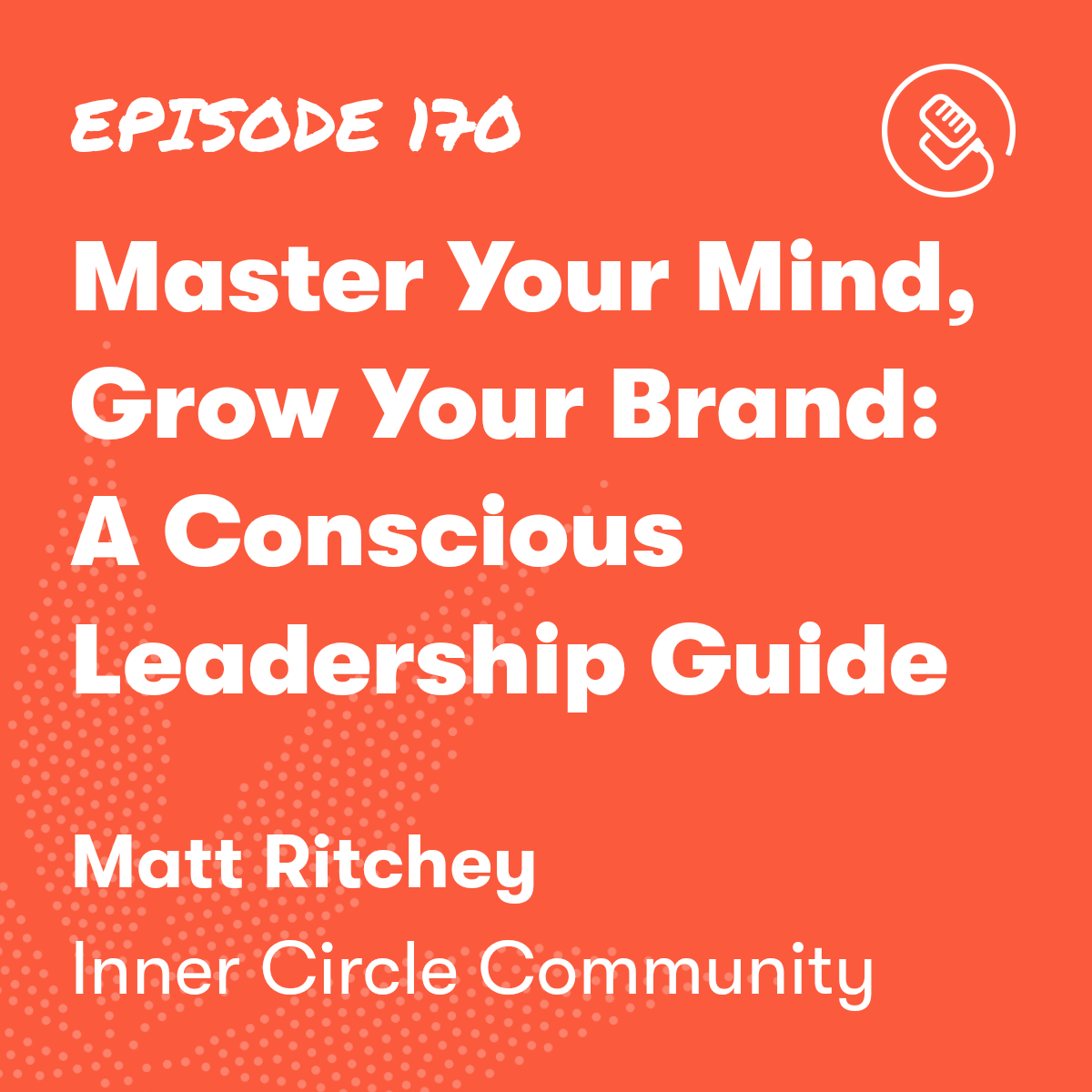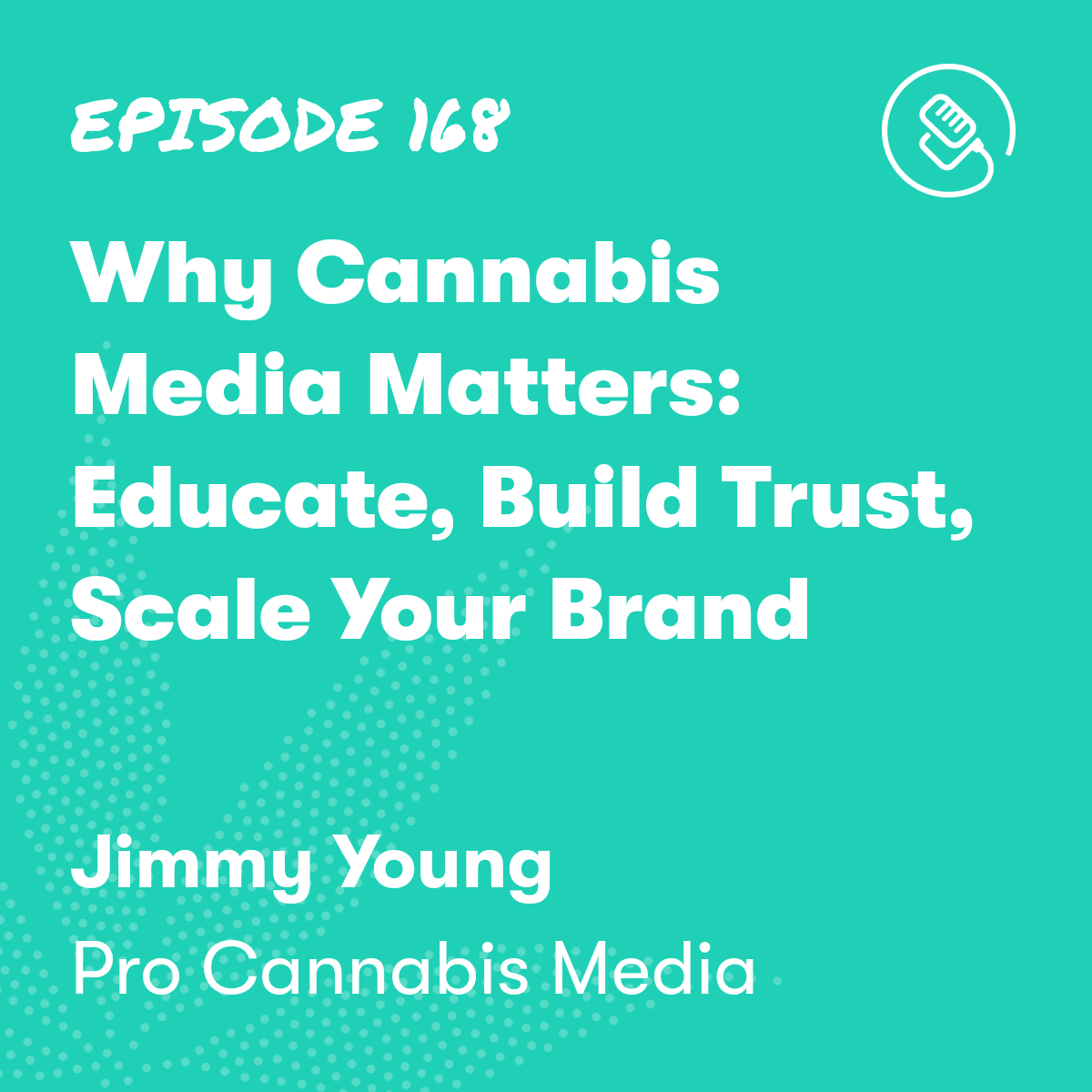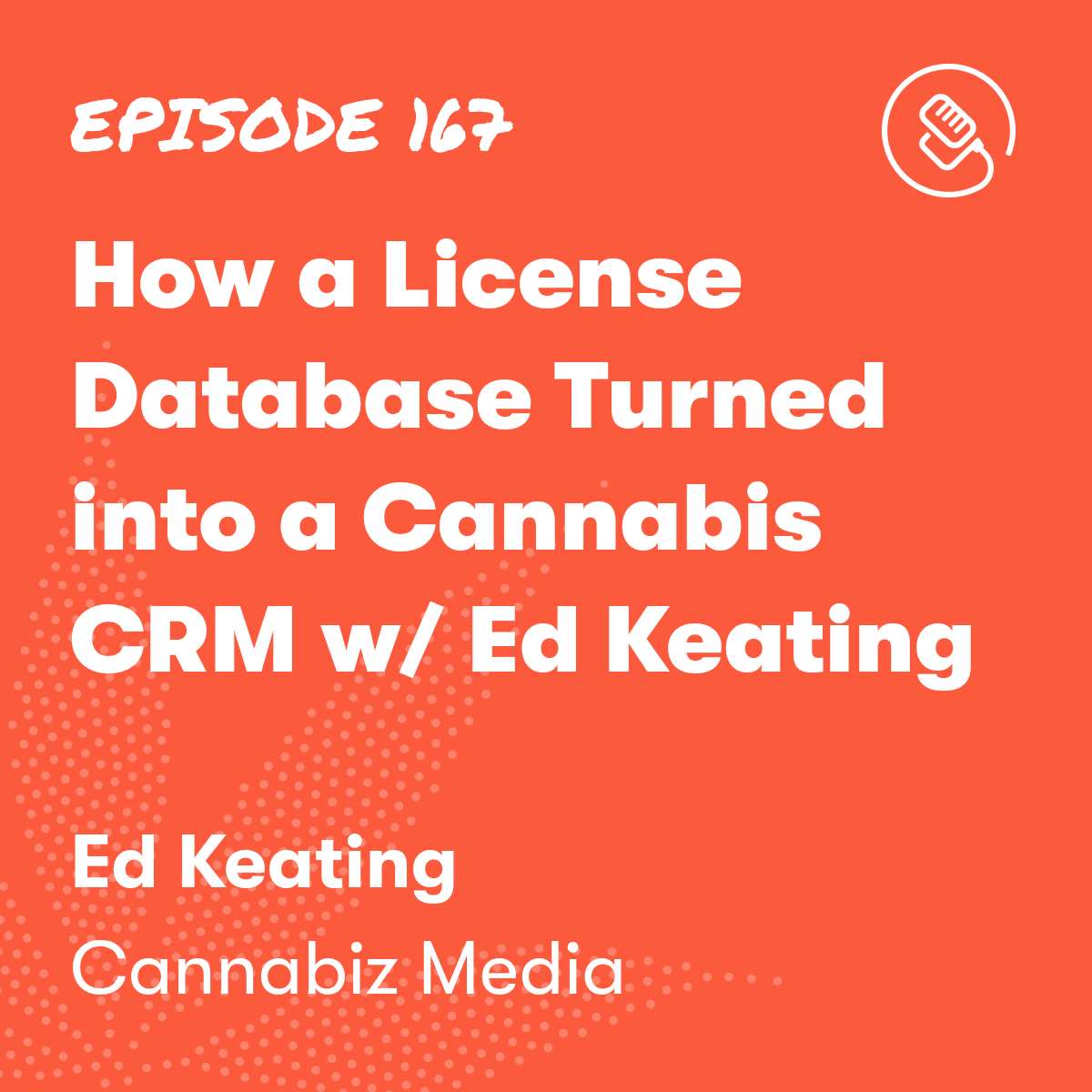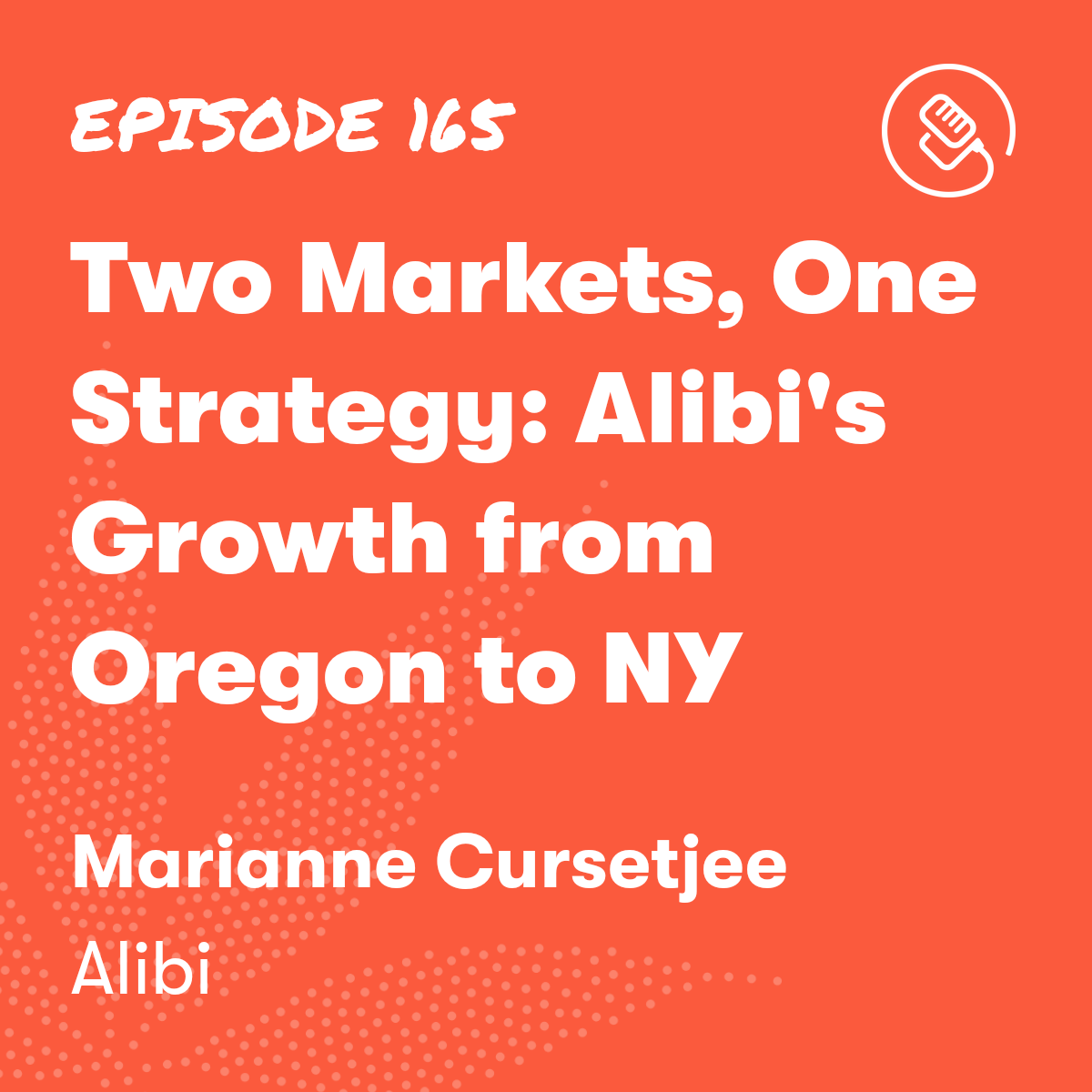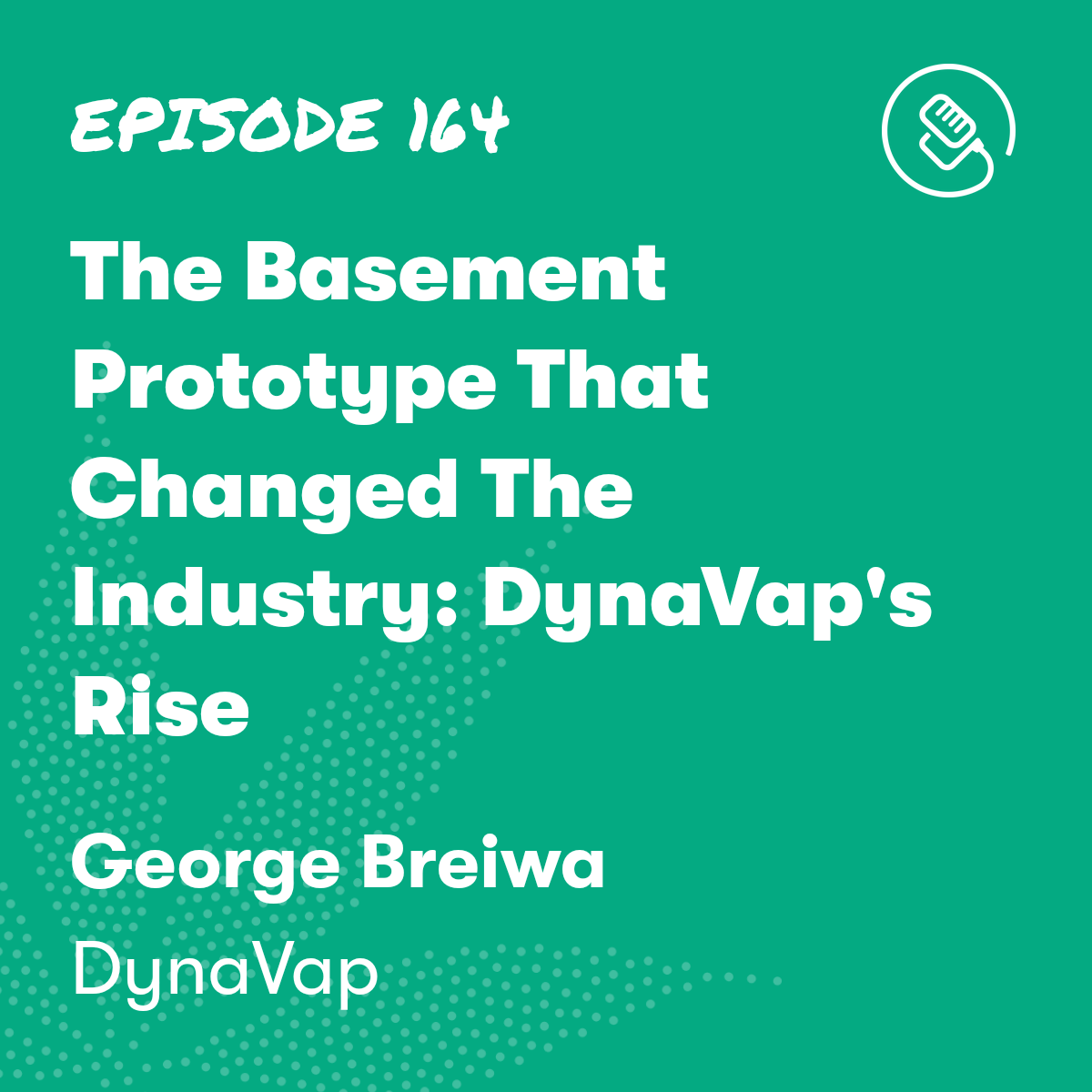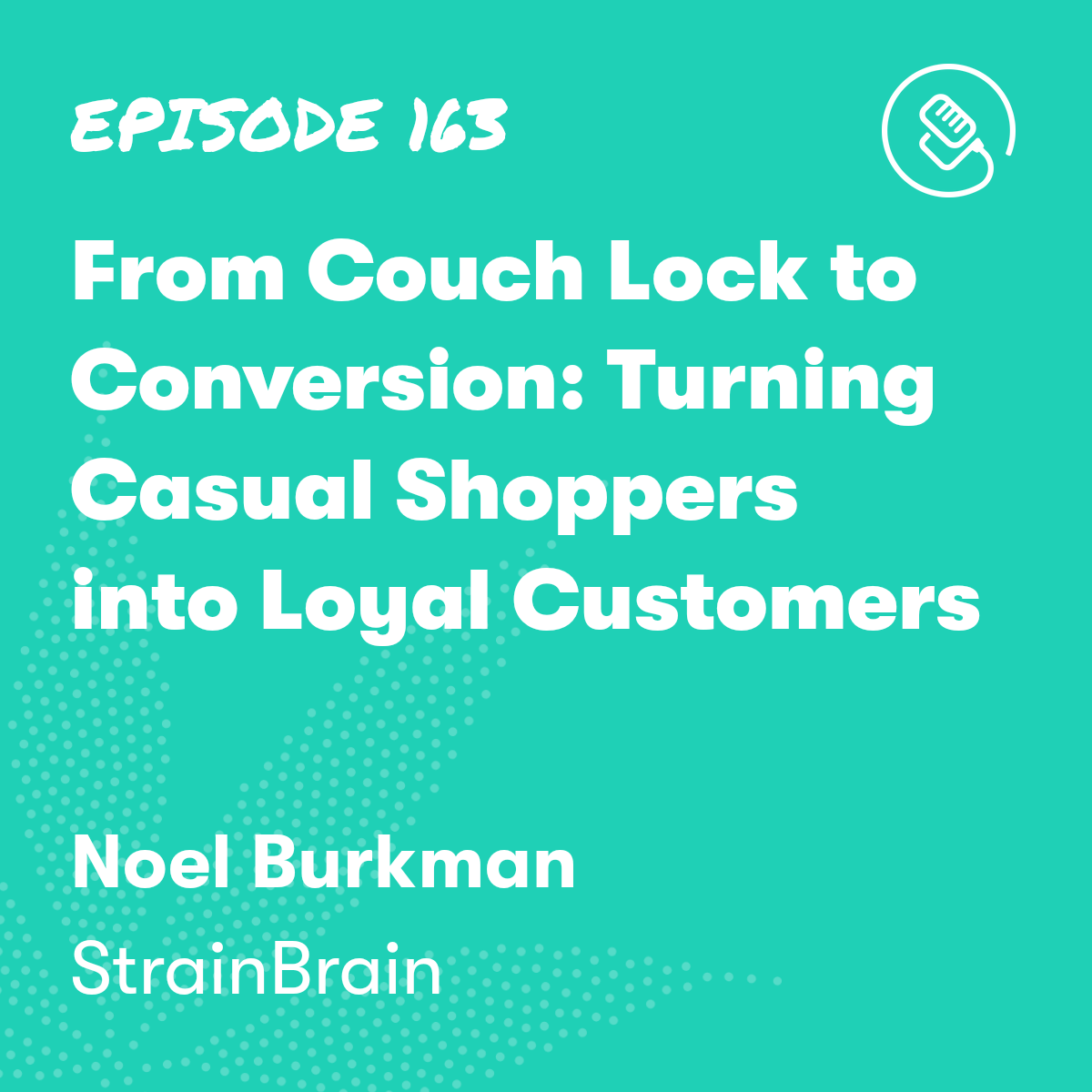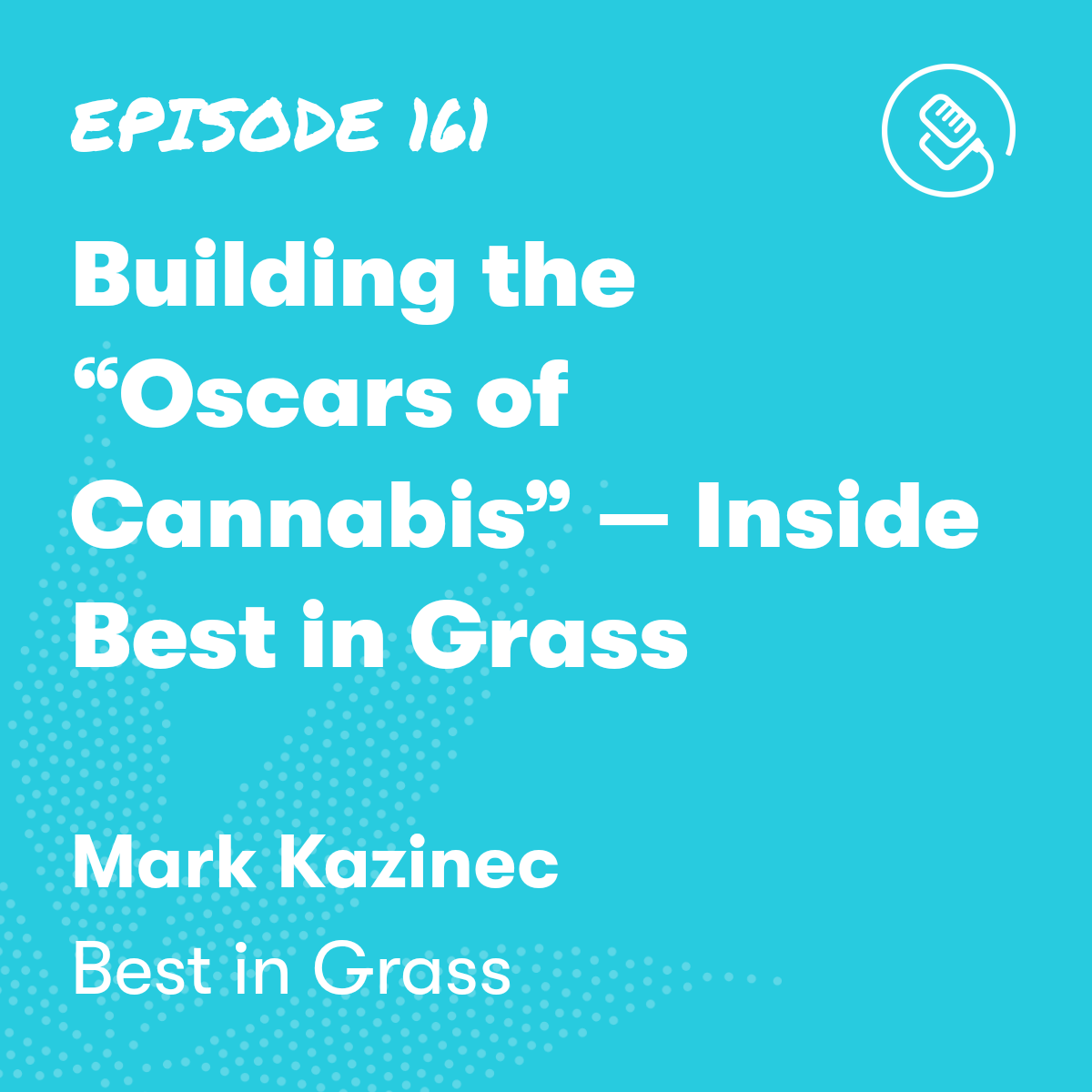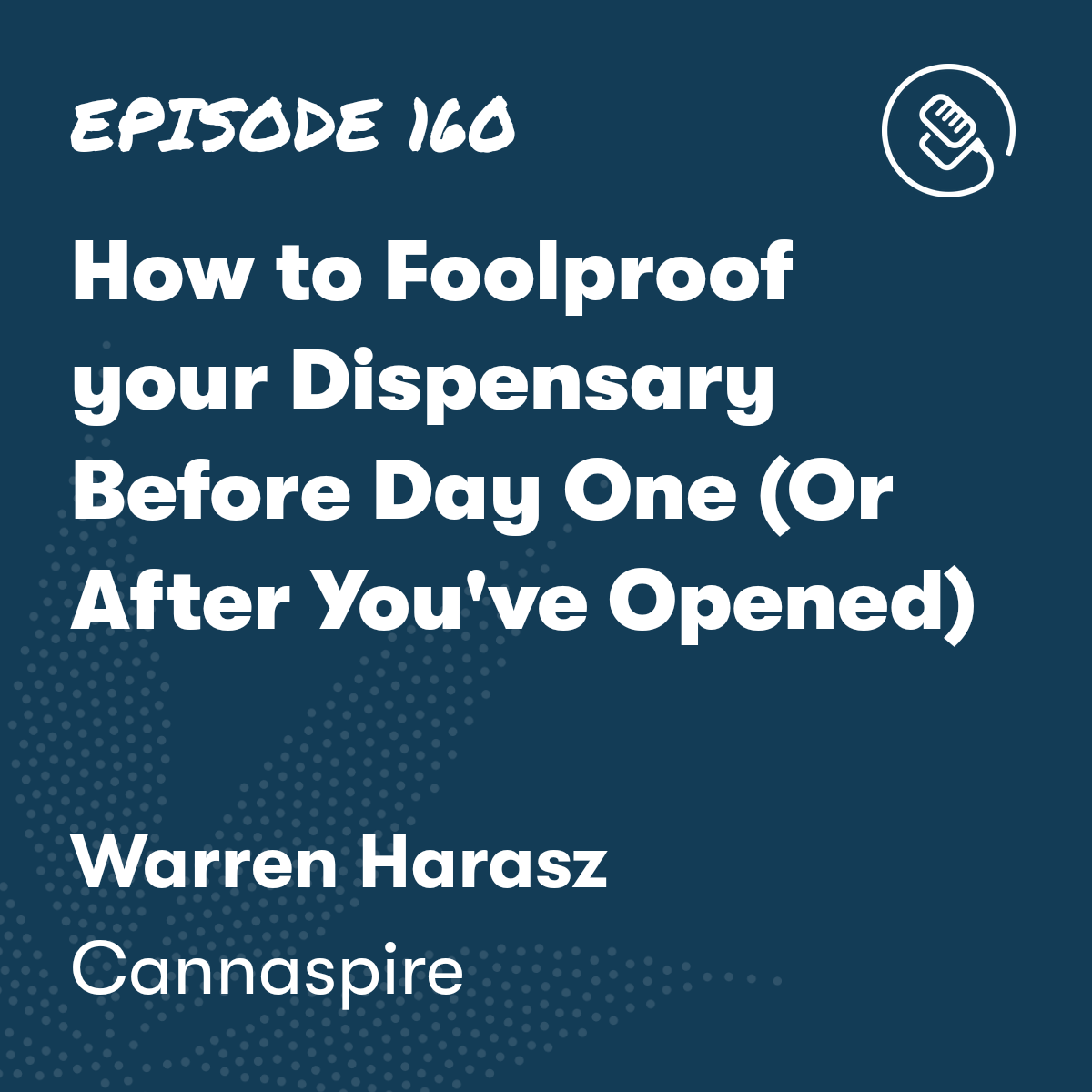

Why You Need to Leverage Customer Data in Cannabis
Episode Description

Episode Transcript
Intro: [00:00:00] Welcome to the KayaCast, the podcast for cannabis businesses looking to launch, grow, and scale their operations.
Tommy: One thing rings true. I've worked with hundreds of entrepreneurs. And what I've found is the businesses that are the most successful have one thing in common. And that is the understand their customers best. Carlo, the founder of dream project out of Maryland, as well as Kuya joins us today to talk about customer data, how you can leverage your customer data to improve or increase sales in your business. This was such a awesome conversation. I hope you guys enjoy.
Carlo, thank you so much for joining us today.
Carlo Manabat: How you doing?
Tommy: You founded Blaze in 2019 to help cannabis businesses go to market and with their branding. What have you learned during [00:01:00] your time with Blaze?
Carlo Manabat: You know one big part about cannabis is that to me I see it as like a retail And cpg business as well, right and And those things are, uh, the consumers in that space are already used to having very, very mature products serve them. So for me, um, you know, if you're trying to win some shelf space in somebody's home, it, it, those things do matter, right?
And, and as the market continues to mature, um, and you're not funneled into maybe three or five SKUs, uh, like imagine like in the very early days, first dispensaries in some markets, right? You only have a few brands. Um, you know, you're going to have to compete with just like almost if you, somebody was going to go into CVS and pick their lotion.
There's just going to be so many logos, colors, and marks, you know, that will take away attention and you have to think, how are you going to win in that? Um, and you know, really looking at your promise to your customer [00:02:00] will allow you to create a mark that's unique and authentic, allow you to message properly, frequently on those things.
And to align to somebody that's actually going to receive that message, right, it's going to be more important than ever when someone's not ultimately forced to purchase your product.
Tommy: Carlo, you mentioned CPG. What does that mean?
Carlo Manabat: Consumer packaged goods, sorry.
Tommy: Gotcha. So really the work that you did was to help brands be more visible to their consumer.
Carlo Manabat: A big part of my career was in I was ultimately in business development for communications and technology companies, but I did start out in corporate retail management, mostly in communications and tech and that role, but, a lot of what I had to do was ultimately getting to market with some of these messages.
So, you know, uh, maybe dating me a little bit, but, you know, uh, [00:03:00] one of the big things I had in my career in the past was trying to get retailers to see me. I understand the importance of selling beyond voice and selling data plans and understanding what data devices were, how they could power things like businesses, so having to go to a different channel of customer.
And I did that work from the ownership level down with our authorized retailers. So, you know, um, I've had a lot of experience, um, in that space. Ha ha ha ha ha. Um, and you know, my goal is to, to make sure that I can bring some of that into cannabis, right? Because again, uh, there are things that I've learned within retail, um, consumer goods that I, that I can definitely transfer.
Tommy: With Blaze, you're the founder of Blaze. Did you help dispensaries and brands?
Carlo Manabat: We've done everything from social [00:04:00] media, management, design, um, SEO, uh, as well as, uh, logo, and persona building.
Tommy: Persona building. What do you mean by that?
Carlo Manabat: Yeah, so, you know, one customer, uh, I worked with, uh, they're really awesome, and, and one of the things they got to at their point in the business is they realized, okay, we're, we're doing well. How can we do better? So they're ultimately, they're, you know, I love the word of optimization that their founder used.
And after looking through really, um, you know, everything they were doing through multiple conversations and, you know, anything that they had from reporting to analytics, I went through it. Um, and one of the things that came up, um, was their personas, I think, could have been better. I think they had an idea, but we could have, you know, really need to formalize it and really establish it, um, now that we've [00:05:00] had, you know, some business right as well to see to what we could do better.
And just by, going through and really formalizing, a customer profile, we were able to increase the business by 15%, really within three months.
Tommy: Can you walk us through the project itself? If I'm a dispensary owner and I've been operating for say a year, so you have a large enough sample size on who's actually coming into the store. How does one start building or start mapping their customer profile?
Carlo Manabat: Yeah, so, uh, one of the good things if you have existing business, or you have the, someone who's got great, um, analyst skills within the team when you're starting a new business, you want to, really look at market research. I think that's part of the persona building process. it's not strictly like a creative and, and, and fun thing to, you know, bubble up as a group of founders, [00:06:00] right?
You really want to make sure that there is, um, It's responding to a real market out there. So I think doing market research is actually one of the first things you want to do because, I believe that, um, you want to see almost like some bumpers of what's possible for your business and your dreams.
Tommy: What does market research look like for a dispensary?
Carlo Manabat: Uh, you know, so the things you really, I think, want to look for, um, is What are your radii, or different things within your serviceability and business? Um, so, also then, what are the cultures within those spaces? Very real things, right? Like, what if you happen to be in this place that's got, like, a temple? I mean, you know, this is not likely the case just because of how populations work, right?
It's like, oh, everyone here is like 18 into 21, but no one's really 21 and [00:07:00] over! Like, except only like 10 percent of the population. Depending on neighborhoods, though, you could have some neighborhoods that might have, like, double the amount of people that fit within your brand. Um, you know, I don't, I can't speak on anything too specific.
Um, to give up anything. You know, like those, you know, like neighborhood by neighborhood metrics can change quite a lot for people who are within a potential, you know, cannabis consumption range.
Tommy: If I was an owner, am I looking out, uh, one mile radius to where I am? How far do I look out and where do I find this data?
Carlo Manabat: Yeah, so one of the big things that comes from traditional retail, that doesn't ultimately change in cannabis. Maybe for a smaller percentage, but ultimately people shop for things that they need physically. Their goal is to get that within 15 minutes, right? That might change a little bit depending on, of course, more [00:08:00] rural communities where that's not necessarily the norm.
Lifestyles are different, but for a lot of places where cannabis is popular, where there is a good consumption rate, you know, that is one of the things where you have consumers who are used to having things within a 15 minute range,
Tommy: So within, so where, where you are, it's either 15 minutes of driving if you're in rural, or maybe 15 minutes of walking if you're in the city,
Carlo Manabat: Oh, sorry, it would be 15 minutes of driving in suburban areas. Um, rural, you know, you'd probably be looking at 30 minutes, even maybe longer, right? Um, so even within our state, you have folks who are in some areas, 30 minutes is probably their minimum drive.
Tommy: So where do you start finding this demographic data?
Carlo Manabat: Uh, so the great thing is, like, you know, U. S. Census is out there. Um, a lot of municipalities actually run, um, their own [00:09:00] reports on, on like, uh, Culture, race, um, uh, you know, uh, working, um, uh, you know, working class, uh, uh, people's incomes. A lot of that you can actually put together to get a pretty good idea with what you're seeing already.
If you're like local, alright, you can start to connect that with things that you see in the news. You'll see those signals come together.
Tommy: How do you, so once you find data on your neighborhood, what is the next step on increasing your sales by 15%?
Carlo Manabat: You know so One one main thing right is making sure that your profiles match like with one of the customers we had Just realizing the types of hobbies they were into You know the types of products that that match Their lifestyle, which actually had a lot to do with their occupation, right? Um, that changes the time they're [00:10:00] available, right?
And, um, again, uh, when they will, uh, have those hobbies, what types of hobbies, uh, what's also near in the area, uh, then, you know, some of the promotions that we run, where we have our tables, the partnerships we have within the community, all lead towards those things, the stories we then show on our image, right?
Um, so if we have folks like Who I really love the outdoors. Um, you know, love, love their vehicles going off roading, you know, you gotta lean towards that. Um, versus, you know, if I was personally, if it was me, I would want something that's like maybe more sleek and modern. But, you know, I would have to meet really ultimately my customer where they want me, and I would've to find that and make sure that, you know, I learn those things.
Um, and, and I think that's the goal of, of a business, right?
Tommy: Do dispensary owners after getting their demographic data from census, the city, et cetera. How do you marry this with the people that are actually coming into your [00:11:00] store?
Carlo Manabat: um, so what you really want to do now that you've learned who that person is, uh, of course you want to create, um, imagery, things around your identity that those people will look for. The content you create have to match up with their hobbies, their, you know, right, things that go through their lifestyle.
Uh, other exercise that you could do is do customer journey mapping. Go Alright, and that'll help you really get in the, you know, the mind of your customer, uh, so that everything aligns. And as long as you do those things, your customer should be able to find you, or you should land ultimately where your customer is looking.
Right, um, because, you know, someone who might be, um, Later, uh, you know, more as a sage, might prefer to use Facebook, piece you could find also, uh, typically, you [00:12:00] have, um, language is another one.
It's another way to start to dive to maybe start to think about some of the cultures behind, um, these places, um, and the people that are there. And now, one good thing, too, is a lot of municipalities and states also have their own reports. Um, either that they do on their own right? But if you're doing 90 percent of your content through Instagram, but ultimately the products you have, the way your layout is, is set for that other customer, right? That misalignment will easily keep people from returning, um, and then ultimately your message is not even going and landing in the right place. create, you know, run, uh, clusters and models
Tommy: I want to take a step back just a little bit. What? When I am looking at the census data and also my own customer data, what demographic data am I pulling out? Is it [00:13:00] income, age, gender, etc? What do you look for when you're building out this profile?
Carlo Manabat: Yeah, good, good question, right? So, uh, you know, really Demographics are a huge part. They're, um, things you also get. Occupation starts to tell you a little bit more about what they do, what they, you know, scheduling, right? So it starts to tell you a little bit more about their days. Um, and then, uh, another big or against the census data, and they'll typically dive into more regional, uh, perspectives of what this means, and that's already a lot more than, um, you know, folks even begin with, I think, um, within this space, right, um, and all of that is free, so, so without having to hire a business analyst that's having to run focus groups and.[00:14:00]
Paying for custom reports, uh, and stringing together different, um, sources of data and having to go off and for you, right? There, you, a lot of this stuff actually, if, if you're able to, um, pull multiple reports, you'll, you'll get a really good idea to the point where it's probably, the, the ROI of having to get that last 10 percent tighter is probably not going to make sense, right?
It's probably going to be better just to go off and experiment and see that reality. Rather than spending, you know, money on a contracted data scientist to buy you a couple points of accuracy.
Tommy: Do you recommend dispensaries also getting that data from their existing customer base? You
Carlo Manabat: two things, right? There might be a different reality that you were able to achieve, right? Or you might realize that you had this plan and if you're [00:15:00] going against the plan and you know for sure. That if you get to that plan that you'll get to that better outcome, right? So you could course correct.
So you definitely want to track that and always see if your initial Research is actually making sense. That's just something you want to follow You know weekly, monthly, quarterly, and typically I've seen if you do a really great job You could even get I've seen even in social media start to change whole percentage numbers to change it towards a trajectory that we were shooting for just within a like a three to six month period.
Tommy: know, not, there are certain characteristics of people living in neighborhoods that probably ring true, probably income level, maybe, you know, because houses rent are, are relatively the same in by neighborhood. What do you [00:16:00] do when the data you receive are in buckets, right? So there's different pools of people and how to take a step back.
If, if. Researching data around your neighborhood, you're finding three or four or five personas. How should a dispensary organize this data accordingly?
Carlo Manabat: Yeah, so one of the, um, you know, one of the, for me, like, perhaps, like, uh, something that might be more tangible that might just give you a quick yes or no. Um, again, it's, um, Doing you know, I think you could with the census data you could pretty much figure out the sentiment like again the total cannabis consumers within a region and just having that um You know understanding you might just have somebody that just sticks out and you're like, oh if I aim for this persona But there's like only 300 versus there's this [00:17:00] persona.
That's like a thousand of this region And you know what, like, and that's like, within your scope of authenticity, right? That's the one that might make sense.
Tommy: Got it. So do you recommend dispensary owners stick to one persona that they're going after?
Carlo Manabat: So, you know, when it comes to choosing, how many personas do you really ultimately want to focus on? Um, it comes down to budget. Um, uh, you know, is unfortunately one of the, you know, real bumpers you have.
If you think about all the things that it takes to produce and launch the content, the events, you know, to even start to get the awareness from one group. When you start to think about your budget, do you have the capability to go after another group, right? Like it takes multiple touch points and, you know, truly time.
So do you have that capability to, [00:18:00] to give that service level to another group? Or are you just gonna touch them once every once in a while you never get that flywheel going? Sometimes that becomes a waste right that could have gone to your To the people who are responding the best and then you could go after a group later on as your business grows So so that's really it.
Um, it's I think like there's just very real budgetary restrictions uh when it comes to you know serving personas and Ultimately, uh, you want to serve a persona really well and you have the budget too To have that service level.
Tommy: That's so true because it's not only are you collecting the data, but you're now validating the data, you're creating the messaging, you're creating the social, you have the product mix, everything that comes with serving that one customer and you have 10 customers you need to serve, then good luck.
Carlo Manabat: Yeah, exactly.
Tommy: You mentioned, and I want to take a step back because what I want to do is I want to systematically walk down [00:19:00] how a dispensary can leverage Understanding their demographic more, how to execute on this and how to implement this in practice to increase revenues.
Because I, I do believe that's, it's very powerful. So, we have a, a dispensary owner that's been around for a year. Uh, she starts looking into the demographics of her neighborhood. And, dives into this data and also looks at the persona of customers coming in. These two data points kind of agree to it with each other somewhat, right?
If it doesn't, what would you recommend the owner do next? If, say, the people that are coming in versus the people or the census data around the neighborhood do not agree, what would be the next logical step for that person,
Carlo Manabat: Yeah, um, so, you know, I think, like, the, the thing is to just, you have to [00:20:00] go back to the drawing board, right? And, and, and start, you know, trying to see if you could recreate the persona you, you are seeing. Right And the good thing is if you do it's like quite easy to start doing surveys you have customer reviews now so I think like it should be much easier to second time around because you have like very real and and and I think one of the easiest things is to really make sure that you have your ears on the ground and And in a very real way you're listening and looking at your customers Um, you know in a way where You're not having rose colored glasses, right?
Your goal is to see them, and just so that, that, uh, and that really should be enough, right? I think a lot of the times, it just comes down to sometimes an ego, where the founder had an original vision, and sometimes they can't, you know, [00:21:00] like, steer away from that, um, you know, just because some of realities might have changed.
Um, and, and the phase or the location of their business, right? So, so the, uh, that's I think actually one of the big things a lot of the times is that you ultimately just please listen to the data. Um, and, and, and rather than, um, you know, and I know as a founder, right? So you, part of what we have to do is really stick things out and, and it's hard to do that.
But there are times if like. The data keeps pinging at you, and it's like an alarm, and then, you know, as a business person, you have to say, Hey, was my original sentiment off? And that's okay. Like, we're allowed to make mistakes in businesses.
Tommy: Well, businesses have to pivot and you, you do have to understand that the reality that you have in your head when you first start out is oftentimes different than actual reality. There's a lot of terms to get to the [00:22:00] truth and you hit the nail on the head, as well as talking to your customers.
If I was a business and I was starting out and I was doing this work, I would talk to the top 100 customers and understand where they live, why they come to buy, and your customers would tell you the story, right? They are the truth. They're the ones that are walking through the doors and exchanging their hard earned money. With, in your business. So that's awesome. So after you talk to, or let's say you talk to your customers, you have this demographic data and you understand your persona and you're building it out. So can you walk us through how to build out this avatar of the person of your ideal customer profile?
Carlo Manabat: Yeah, so, well, one of the easy ways, like I mentioned before, is like a customer journey map. So, what you do is imagine yourself in that person's shoes, and literally walk through their shoes. Through the day. Like what would they, when they, from [00:23:00] they wake, when they wake up to when they go to sleep, what is that person doing?
And you, you map that out and you think about different things that you literally think about it these key points of the day. Maybe what opportunities or challenges or motivations they have. And you start to paint a, a picture that goes deeper, right? Because depending on time and feeling, is it Instagram time?
You know, you'll, um. It's Friday's time to go out. These little things start to tell you who this are, how to message. Um, and one other thing to add to that is I like doing mood boards. So just like going on the internet and finding pictures with your team of who you think this person is, right? And really using an image.
I think it's like one easy way for a whole team to come together and be like, Yeah, that's the, that's, that's him or her, you know, that's they. So, so [00:24:00] like, um, you know, having an image component to, you know, when you do your customer journey mapping, it's something that's like, uh, I like to mix it in with like a graphical where you can see it, um, it's chronological, but it usually, most of it's words, but I like having, um, like, um, using, uh, emojis as well within there too.
So, um,
Tommy: bringing the team involved in this, this mapping or, or I guess this work,
Carlo Manabat: Yeah, so, you know, without, you know, you could find a lot of this or work with a professional to get you through these exercises and there's more you could do. Um, but, but, um, yeah, I think the, what you want to do is, uh, you want to bring your key stakeholders who have an understanding, um, and a vision behind and will be touching the, the, you know, where this message is going to, or the consumer, right?
So, you want to get the folks who, who have like, Like, If [00:25:00] we're butchering some meat there we're gonna have to bring back the boneless Like even when we're cutting something into like, you know, like, thin sliced, julienne cut beef, we'd have to bring back the chicken. Like, Such as raw meat but but with our beef sterilizer pack.
end. Feed that room, it's probably too many. So, so, you know, that's, that's like your parameters, right? Probably not good just to have one person, but you don't need to have everybody. Um, so you definitely want to have the key stakeholders there though.
Tommy: client that you were working with? Can you walk me through their customer, ideal customer profile and the key points that you've identified during the customer mapping? If you remember, I know that it's been a while.
Carlo Manabat: Yeah, so, uh, one of the big things for that area was lifestyle and [00:26:00] occupation. Um, since the town was also, you know, like, um, near the water, right, so that, that changes like and adds like, uh, uh, you know, a nice twist, uh, occupation was, uh, a little bit more mature, um, income was very stable, uh, well to do folks, right, so just to serve them, we realized they need consistency in the products that we carry.
They have the ability to experiment as they go through their customer journey, so we still need to meet that as well. Um, and they want to make sure that there's, um, high end products available, right? Um, so, you know, we believe in accessibility as a team, you know, with that brand. So we had to make sure, ultimately, that our product mix, you know, is one of the outcomes, right, that it served at.
So ultimately, you know, it meant Bringing in maybe [00:27:00] just a few more brands, changing some of the ratios, but you know, that was one of the things that we were able to do, um, again, right, to go march towards that increase in revenue and basket size ultimately.
Tommy: And when you're doing the customer journey, are you looking into the key points in that person's day, i. e. when they wake up, what are they usually doing? Do they have kids? Do they drive to work? Are they picking up their cannabis on the way to work or on the way home? Things like that.
Carlo Manabat: Yeah, and sometimes the cannabis story isn't even really what we're looking for necessarily, right? If it's very clear, we go into it, but even for me, it's like, what are even the things that are even more pressing? To cannabis Right because if we could answer to those things, I mean how powerful would that be
right if then?
Tommy: do you mean?
Carlo Manabat: so so, you know like You know by the time they're thinking about cannabis, they've probably already made a decision [00:28:00] But if somebody let's say is thinking about wellness, how do we meet them while they're still thinking about their wellness goals or wellness plans? Right? Like, where do they go for wellness?
Do we want to be there? Do we want to introduce ourselves there? When you do customer journey mapping, uh, some of the personas you'll see, some things will come up. Oh, it's like, how do these people like to get information? You know, you'll find out, oh, these people won't buy anything unless it's a referral from a friend, right?
So if you're going after that person, experiential might be a big part of what you do, right? Because you have to get them You know, beyond social or in digital most likely, right? You're gonna have to get that additional touch point. So, so learning those things puts you in the right place, right?
Tommy: Gotcha. Very insightful. So tell me what are the next steps in me using this project as an example as you're building out your Customer journey [00:29:00] mapping. What's next?
Carlo Manabat: You know, hopefully you, you, you knock it out the park. You serve
them and
Tommy: by the way? Is there any, what do you do to validate your data?
Carlo Manabat:
Oh yeah, so a few things, um,
easily, uh, you want to track,
um, how social is doing, right? Because your, your profiles and, and how you do your campaigns, right? So you start looking for signals, positive signals on growth on your social campaign. You definitely want to start paying attention to your reviews during that process.
Um, a big part, um, you want to start surveying a lot through that process. That's one of the big misses, actually. You have to do that. You have to, you know, you'll have to do something additional to create and collect data, ultimately. Right? Um, so one big thing we have, you know, it's like, we have digital tools, we have stores.
So you want to create surveys. [00:30:00] Uh, I would recommend working with somebody who's specialized in that. Uh, you know, uh, surfacing the answers you're looking for. It's actually not straightforward as you think. Uh, but you know, without diving into a bunch of things, if you could achieve surveys within your campaign, be very consistent about it, that will be very telling.
Tommy: So let's say you validated. Oh, take a step back. How many people do you need to survey before you can start spending money on the data that, that you've accumulated? Mm-Hmm.
Carlo Manabat: Um, It's hard when it comes to data, right? It's not really necessarily always a hard number. Um, what you really look for is like, you know, when the trend starts to happen, right? And, um, and that's, that's really the best thing I could say right now because I don't have like enough data inputs to have done like cannabis retail [00:31:00] store surveys to be like, well, After doing like 30 stores, 100 actually does overall seem to be pretty good.
Unfortunately, I don't have uh,
uh, any
context from that perspective. But, but, but ultimately even if we just look at when we do any kind of like surveying, we're at least trying to get like 100 at the very, very least. But um, it's like as much as you can? I know that's not a great answer or not even just as much as you can, but like I said, it's, it's ultimately, you know, once you start to A trend, but it, and it's usually a lot, and that's why I say not as much as you can, right?
Like you, you want to actually get, if we have the capabilities a decent amount, like I would, if you, if I had the power, I'd try to get a couple hundred, right?
Tommy: in your example, you. You have the customer journey mapped, you have the ICP map, the ideal customer profile. You've done your surveys, you've validated as much as possible. How do you take this data and put it into [00:32:00] practice?
Carlo Manabat: Yeah. So, um, once you have, you know, really validated your journey map, that's a pretty easy roadmap to follow a campaign actually. Um, a lot of your ideas will come from there. You can bounce back to your personas right of like what your voice and tone is But your journey map will tell you like where when and how and those are like the basic things of a campaign
Tommy: If I was, and maybe we use your example, or the customer that you've helped increase sales by 15 percent through doing this, what did they do as a dispensary?
Carlo Manabat: Yeah, so, you know, I've mentioned one of the things is making sure the product mix match what they had they did change their socials Messaging and of course some of the partnerships that they work with And then even, uh, we realized they were doing a lot of good things and weren't like talking about it enough that were perfect for [00:33:00] the ICP, right?
So it's like, you know, surfacing some things that were already there.
Tommy: So what was their ICP?
Carlo Manabat: Uh, you know, it was, uh, folks who were like actually closer to 40. So a lot of folks who are already like working, um, you know, uh, people who work jobs like, uh, were looking to. Not just like traditional tech, but you know, folks who work more engineering and tech jobs on the ground.
Um, and you know, had hard, uh, you know, sometimes a lot of hard days, right, because they're working outside a lot. Um, they're working a lot of things that, you know, that are very physical. But at the same time, that's what they enjoy, right? So when is their time off? It's their time off. Uh, they live in a place that allows them to enjoy the outdoors.
So they continue to do that. Buy to water, uh, so you know, like even little things that we could add, um, from [00:34:00] promotions are just things that will allow them to do that more, right? So, rather than just giving away like a koozie, what can we do to, to do something that aligns more with an experience? Um, and
then
Tommy: what was, um, what was the product mix? What was it before and how did they change the product mix to meet this profile?
Carlo Manabat: you know, one little thing without diving into everything, uh, we realized there was more room for like Higher end products. Right. . That's, that's awesome.
Tommy: and maybe larger basket size.
Carlo Manabat: Yeah, . It's like, oh, like it's, it's like, you know, it's a good thing to, to have this and it, and, and it's, it's not like we have to fill that so much that we lose the accessibility because, you know, um, you know, the founders really still really, really care about community. Um, so, so that we, we didn't want to lose aspects of that.
And that's a great thing too, right? We're [00:35:00] able to better serve, um, a customer that we realized we could have been serving better always, and we didn't really take a hit on the things that, that the company and the business owners cared about.
Tommy: And, and you know, I want to talk a little bit more on product mix, like with knowing that The The people that are, that are coming to your store, they're in their forties, they have their career locked down. They're probably earning more than somebody that's in their twenties or mid twenties. Um, they work outside and it's physical and they live around nature. What was the messaging and the product mix that attracted somebody of that profile?
Carlo Manabat: Yeah. So, you know, some of the changes we made too were, like, a lot of things were, um, and we still use, but, you know, we had to change the, the volume and the ratios, right? So, like, uh, even some of the imagery before it's cued to, you know, [00:36:00] um, a younger crowd. Um, maybe, uh, more, too much of, like, um, social versus recreational outdoors, right?
So we had to change some of that messaging
and imagery. Uh, the people who we highlighted too, right? It's, um, Again, just showing, uh, more of the gamut of our customers, uh, rather than just, like, a slice, right, to show that, you know, hey, like, these folks are actually a big part of who we serve and we're trying to show you more love, um, and even down to some of the things we're starting to change around the store from the imagery and there, the products we carry
before we even go to the flower side, right.
Tommy: You know, I picture a middle aged couple with a dog on the trail or on the canoe, you know, enjoying their time outdoors. That's,
Carlo Manabat: uh, you know, fishing is like a big part of the [00:37:00] community. Yeah,
Tommy: they changed some of their partnerships. So what does that mean? What partnerships were they in and, and how did that
evolve?
Carlo Manabat: so, you know, um, from a vendor perspective, they had to add some to change the market mix, or the product mix a little bit. But then, even when it comes to the localization aspect, uh, you know, when it came to these hobbies, and they started going and making more, um relationships with those types of businesses, right, on how can they connect, do things together, uh, go to be part of, um, different festivals, right, uh, and how can those businesses work together, uh, and then some of the things they surfaced were the things that they were working with, like veterans groups and, um, you know, animal adoption.
So, uh, yeah, really, like, amazing stuff, again, that they were doing. [00:38:00] And, you know, surfacing those, but adding those other aspects that still now complete, like, you know, ultimately, I think, um, a better ecosystem for their customers.
Tommy: Gotcha. So really is, is what are the interests of our ideal customers? And that's kind of the adjacent side of selling cannabis. And are we partnered with these interests or with these organizations, nonprofits, et cetera?
Carlo Manabat: Yeah, it's like, um, because once you get that right now, you have, like, a shared audience versus, like, two things that are ultimately, you know, creating turbulence.
Tommy: How does somebody, you mentioned say a dog shelter. And if, if I was a dispensary and I, and this is a partnership that, that I created, and probably I did this not because I wanted to increase revenues, but you know, you kill two birds with one stone. Sometimes it's, you know, you do something great and, and while you're doing it, okay, well, how do I leverage [00:39:00] this also? How does somebody leverage the audience of, you know, the business that you're working with? Or, or how do you, how do you go to market together and share an audience?
Carlo Manabat: Yeah, so, uh, I think, you know, uh, some of the partnerships, right, like, a lot of them started focusing more on, you know, Uh, things that you would do towards, um, the water, uh, towards the outdoors. Um, even with the mix of that, one of the things we tried to do to mix the crowds was, you know, like being in festivals that were, like, outdoors.
You know, like the music festivals, right? So, it just created this, um, thing that creates a consistency in the messaging and the story that they're telling, right?
Tommy: Is there anythIng that we didn't talk about on the overall aspects of understanding your customers better and building a brand to serve these customers that you want to [00:40:00] highlight?
Carlo Manabat: I I would say, you know, I touched on it a little bit, but yeah, like, um, the, the brand side of it, right? Like I mentioned, part of that is the market research phase. And, and, and that's part of why it's important, but like, right, and I mentioned it's retail, it's a consumer good. We've seen that brands matter.
Just the ways the stories are told matter in those spaces. They already are served that way. So, for me, I would just, you know, I think, almost want to say you should elevate your brand in the sense that it's, it's not just this creative process. It's something that truly is part of a business. A lot of businesses have chief brand officers, right, that they've branched off from the, the marketing officers.
Some places have marketing officers, brand officers, and creative officers, right, just to manage all these lines of communication. Right. Ultimately with your peoples and your tribe. So it's really I think the [00:41:00] idea is just to treat brand as an integral part of an organization and a business this day That that does have alignments with all those other things that would be You know within the scope of your c suite, right?
So that's that's really it. It should have that attention It should have that time and it should have that investment Alright, because these things lead into certain things. Um, very extreme scenario, but ultimately imagine if you were thinking you're building a high end brand and the processes you made for your cultivation ultimately is for like a high volume low to mid grade something that's meant for like just processing only I mean You know again, it's an extreme scenario, but you can see as you start to Um Do a lot of these things that, uh, these exercises, um, these discoveries within your [00:42:00] brand, then you could actually have a lot of very real things that means to your operations, your values, um, and, you know, ultimately, you know, sometimes, or a lot of the times, I think, you know, it does say the things that end up in your cultivation and processing facilities.
Tommy: That is so true. And the entire business has to be aligned. When the brand is one thing, but the operations is set for something completely different, then you're setting yourself up for failure. How long, and in this example, the client that you worked with, how long did they see the boost in income?
Carlo Manabat: Yeah, so it, you know, went through for about nine months, um, and that's when we started to need to now start to, oh, okay, how do we optimize more? Right now it's like we've reached the point of, [00:43:00] now we need to start optimizing the marketing behind the, the persona. Yeah. So. So that's the cool thing. I think ultimately it's a good signal, right?
The persona worked. Um, uh, you know, you know, that's the hard time thing in business. Sometimes you don't have like the money to attack multiple problems at one time, right? So, so, you know, just like tightening those things before they can and getting that increase right now allows them to start to optimize the marketing side.
So, um, You know, ultimately it's good. We got to another milestone, um, and that's what we're working towards now.
Tommy: Just quickly. Cause I know that we don't have a lot of time. Optimizing marketing is. Very, very complicated in the cannabis industry just because of the limitations that you can do. How does a dispensary tackle marketing and brand awareness online? When
Carlo Manabat: too technical, I think where people actually [00:44:00] get hung up, where they run out of ideas or options before we even get into extreme optimization, um, and getting extremely creative, uh, one of the first steps is, uh, I think a lot of folks really just need to remember that a lot of the things that we're doing in And marketing is really just getting the message across.
For a lot of us, we're new to people, right? It's a new industry, right? So, um, we're building awareness. So, you know, we're really just in this phase where we could actually take advantage of things more like education, and just literally having fun, and getting people to understand us and what we're talking about.
I think a lot of folks are trying to convert right away with the messages, and that's where people are, you know, ultimately, you know, getting, I think, uh, too focused on a lot of those types of, um, messages. Like the copy ends up being [00:45:00] things that need numbers, discounts, when we're trying, you know, more sales based things.
Now if we were doing again more on like marketing and experience knowledge base a lot of those things I've been running a lot of experience on experiments and social and they they get through and I know like a lot of other You know the top brands and cannabis right there. They're figuring it out They're getting through different channels and they're being You know better about some of the partnerships they have with influencers right who who have existing networks and are being, you know, um, very clever about the messages they do say rather than, again, trying to convert right away.
They're just trying to get an idea across, right? So, and those are some of the best things you got to do. And I promise you, if people really begin to like you, then they'll start to purchase and they'll purchase forever.
Tommy: There's so many brands that are doing it well, [00:46:00] leveraging social and leveraging influencers. So many brands. Um, I want to, I want to pivot just a little bit and talk about Kuya. You founded Kuya in January of this year. And can you talk a little bit about the mission that you guys have and why is data so important?
Carlo Manabat: Yeah, you know, so like, uh, as I mentioned before, you know, data really should be the things that inform a lot of these bits and bobs around your brand and your business, right? Um, they are the signals, um, and, and unfortunately, as people, we can only ingest and understand so much input. It's beyond, beyond our control.
You know, business has way more, right? Than one, any human can ever handle. So, so we need tools to do that. And then on top of that, we're insanely biased. So, so tools again, help with that. [00:47:00] Uh, and in a young market, there's not a ton of tools available out there. So I want to be one of the ones that comes in.
Provides a tool that gives more access to data. So people can just get to making these decisions. Right? Rather than spending their time um, you know, at least from my experience, most cannabis business leaders, marketers and owners um, already have to wear so many hats and you know, taking two days out of the week to become a business analyst from all the raw reports that come in.
You know, it's, it makes the job too hard and you know, sometimes the the data dive is one of those things that gets left behind, right?
Tommy: What, what kind of data is critical for a business owner to have access to?
Carlo Manabat: You know, it's, uh, your consumer behavior, right? Who should be able to tell you some of your top line customers. Uh, like who [00:48:00] they are, some of the psychographics, is really what you're looking for, ultimately, not just demographics, right? Um, and then you
Tommy: So what's, what's psychographics, if you don't mind me
Carlo Manabat: Yeah, it tells you, you know, more about the customer from, um, I like to think a narrative point of view, like it tells you a little bit more about their motivations, who they are, and why they purchased rather than just, you know, a couple of analytical points.
Uh, but yeah, so, uh, you know, yeah, I guess, you know, other things too that are important would be, you know, which products are performing well. But, you know, for, you know, I think even just in that consumer part, there's so many things behind customer segments, customer sentiment, that you could dive into, right?
[00:49:00] And understanding what makes somebody churn or become a promoter, right? So, you know, just understanding consumer behavior alone just gives you so, so much.
Tommy: I know this, this data set isn't available today, right? And you guys are going to make it available tomorrow. When's the launch? And how can our listeners follow when things are ready?
Carlo Manabat: Yeah, so, you know, we'll be getting through very early beta testing locally here in Maryland over the next couple months. Our goal is to launch over the next few weeks as we get through our bug testing. So we're in like a very awesome, crazy fun phase right now, right? And then, you know, these features will be coming out over time, over the course of the next 12 to 18 months.
So you'll see. We just start to see more and more powerful features over time on our platform. Um, and, you know, uh, we're working very, very hard at it every day. [00:50:00] So, um, everything from, you know, the, the, uh, models behind everything, you know, for us, uh, really matter. You know, we, we, we want to have the level of accuracy that, that people can really use, um, right away.
Um, and we want it to be, you know, within Um, a report on a dashboard that actually is usable, right? Something that they don't have to take, um, something that we call like raw data and have to turn into something. We, we want it to be very, very usable. And, um, in the future, of course, you know, um, we want people to be able to talk to their data.
And that's, that's I think where everything is going.
Tommy: Carlo we have to have you come back. So you can share with us how entrepreneurs can leverage this data to scale their business and make better decisions. Cause I know that you're launching in a couple of weeks and within three months, you will have real [00:51:00] world cases on how Kuya has helped your early clients scale.
Carlo Manabat: Yeah, that'd be, uh, that'd be really fun. we get extra nerdy on that one if this wasn't too nerdy already.
Tommy: No, this has been such a fantastic conversation because I, I don't think that entrepreneurs really think enough or really invest. Running a dispensary is hard. It's hard because of all of the regulations, but also because of just how much time it takes to actually run it successful. And there's only so much time in a day.
And this, although not urgent is very important. This data that, that, um, you know, people should have and in their fingertips on who actually is coming through this door, who are we serving and how do we serve them better?
And I love this conversation. I think a lot of people listening can really learn now on persona building and how that can really help. [00:52:00] Thank you so much.
Carlo Manabat: Oh man. Thanks for having me.
Tommy: Thank you so much for joining us. If people wanted to reach out to you, where can they find your information online?
Carlo Manabat: Um, LinkedIn, um, is great. Uh, let me remember profile , but uh, also, uh, carlo@hikuya.com. very Easy, C-A-R-L-O at H-I-K-U-Y a.com.
Tommy: Perfect. We will provide links to the description, um, of this pod so you can reach Carlo.
And yeah, and you know what?
Carlo Manabat: Okay.
Tommy: easier. We'll, we'll, we'll, we'll provide the link to Carlos, uh, Carlos, uh, LinkedIn as well. Thanks.
Thanks for joining us today, Carlo.
Carlo Manabat: Dope man. Thank you bro.
Tommy: As always, thank you guys for listening. We wouldn't be here without you guys. Please like subscribe, comment, wherever you're listening. It really helps to channel a lot. Until next time, take care of..
Outro: Thanks for listening to the KayaCast podcast. We hope you enjoyed the show. [00:53:00] Don't forget to subscribe to our podcast and your favorite podcast app, or visit our website to access the full archive of episodes from the show.
